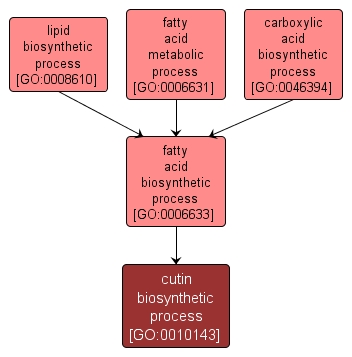GO TERM SUMMARY
|
| Name: |
cutin biosynthetic process |
| Acc: |
GO:0010143 |
| Aspect: |
Biological Process |
| Desc: |
The chemical reactions and pathways resulting in the formation of cutin, a waxy substance, which combined with cellulose forms a substance nearly impervious to water and constituting the cuticle in plants. |
Synonyms:
- cutin synthesis
- cutin anabolism
- cutin biosynthesis
- cutin formation
|
|

|
INTERACTIVE GO GRAPH
|














